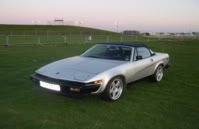Postby Workshop Help » 06 Jan 2008 22:14
Mr Laurence,
If I may, the internal ratios are the same on the TR7 gearboxes regardless of the end letter, A-C, except for the late fuel injected cars that had a different 5th gear that allowed an 800rpm drop from 4th versus the 550rpm drop from 4th on the earlier TR7 gearboxes.
As for basic strength, there is none as they all have the same basic gear case, inner plate, rear extension, main shaft, synchros & hubs, and main shaft gears. The difference is the later 'C's have a somewhat larger input shaft taper roller bearing and the laygear has some minor modifications over the production span of the TR7. But, the late laygear will fit just fine in an early case.
The change to a larger input shaft bearing caused a minor change in the gear case as the front hole was enlarged to fit the larger bearing and the input shaft was also changed for that bearing. Overall, both early and late gearboxes are equally strong.
Given the choice, we opted for the early 'B' gearbox for the TR7 as the input shaft, front bearing, and shims were less expensive than the late 'C' gearbox. Since our engine is relatively stock, the 300hp capacity rating of the LT77 gearbox rendered useless the argument for going with the late 'C' gearbox with it's larger front bearing and any imagined benefit it may have offered.
May I suggest, on tear down, please examine the condition of the teeth on the input shaft and the corresponding teeth on the front gear of the laygear. If striations are present on the input shaft teeth along with a longitudinal groove on the teeth of the laygear, these two parts should be replaced. Therein will be the determining economic factor on which gearbox should be overhauled. In our case, we saved the early gearbox as parts prices were less.
The choice is yours.
Mildred Hargis




